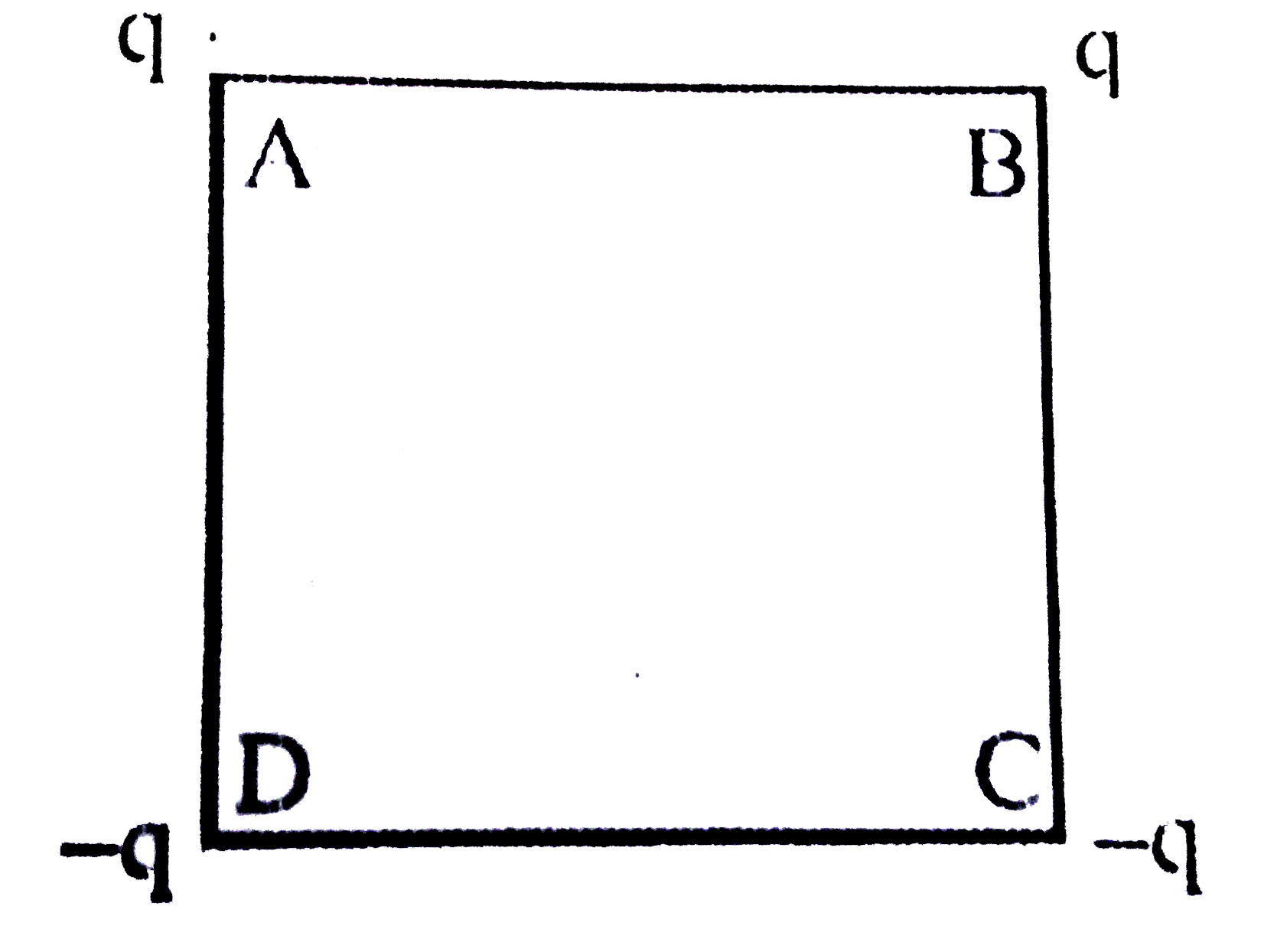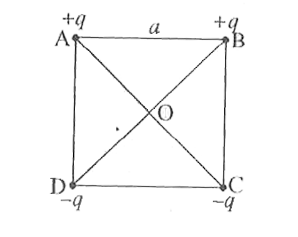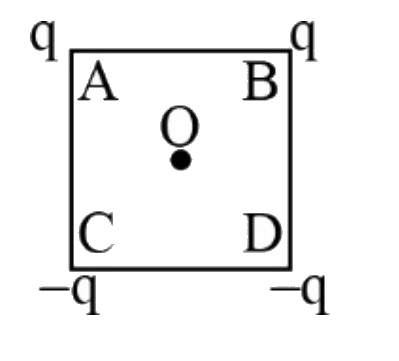Charges are placed on the vertices of a square as shown. Let E r be the electric field and V the potential at the centre. If the charges on A and B are interchanged with those on D and C respectively, then :-

→E remains unchanged, V changes
Both →E and V change
→E and V remains unchanged
→E changes, V remains unchanged
The correct Answer is:D
E→ Vector quantity, hence direction will change.
Similar Questions
एक वर्ग के कोनों पर आवेश चित्र की भाँति रखे हैं| माना इसके केंद्र पर विद्युत् क्षेत्र →E तथा विद्युत् विभव V है | यदि A तथा B पर रखे आवेश C तथा D पर रखे आवेशों से परस्पर प्रतिस्थापित कर दिए जाते हैं, तो-

View SolutionCharges are placed at the vertices of a square as shown in the diagram . If charges at A and B are interchanged with C and D respectively , then,

View SolutionA charge + Q at A as shown in fig. produces electric field E and electric potential V at D. if we now put charges -2 Q and + Q at B and C respectively , then the electric field and potential at D will be :
View SolutionCharges q, 2q, 3q, 4q are placed at the corners A, B, C and D of a square as shown in the following figure. The direction of electric field at the centre of the square is along
View SolutionCharges q, 2q,3q and 4q are placed at the corners A,B,C and D of a square as shown in the following figure. The directon of electric field at the centre of the square is along
View SolutionA charge +Q at A as shown produces electric field E and electric potential V at D. If we now put charges - 3 Q and +Q at B and C, respectively, then the electric field and potential at D will be .
View SolutionCharges are placed on the vertices of a square as shown. Let E r be the electric field and V the potential at the centre. If the charges on A and B are interchanged with those on D and C respectively, then :-

View SolutionCharges are placed at the vertices of a square as shown in the diagram . If charges at A and B are interchanged with C and D respectively , then,

View Solution
